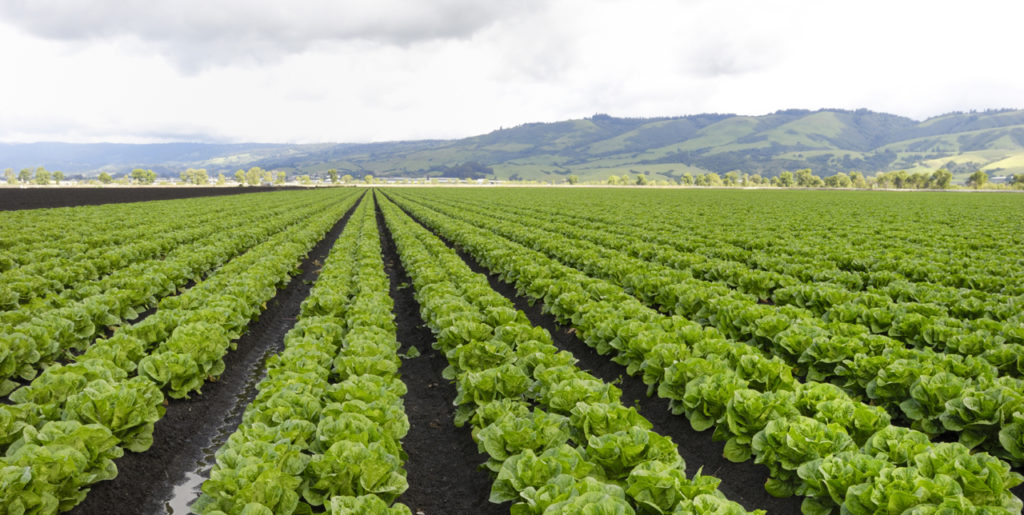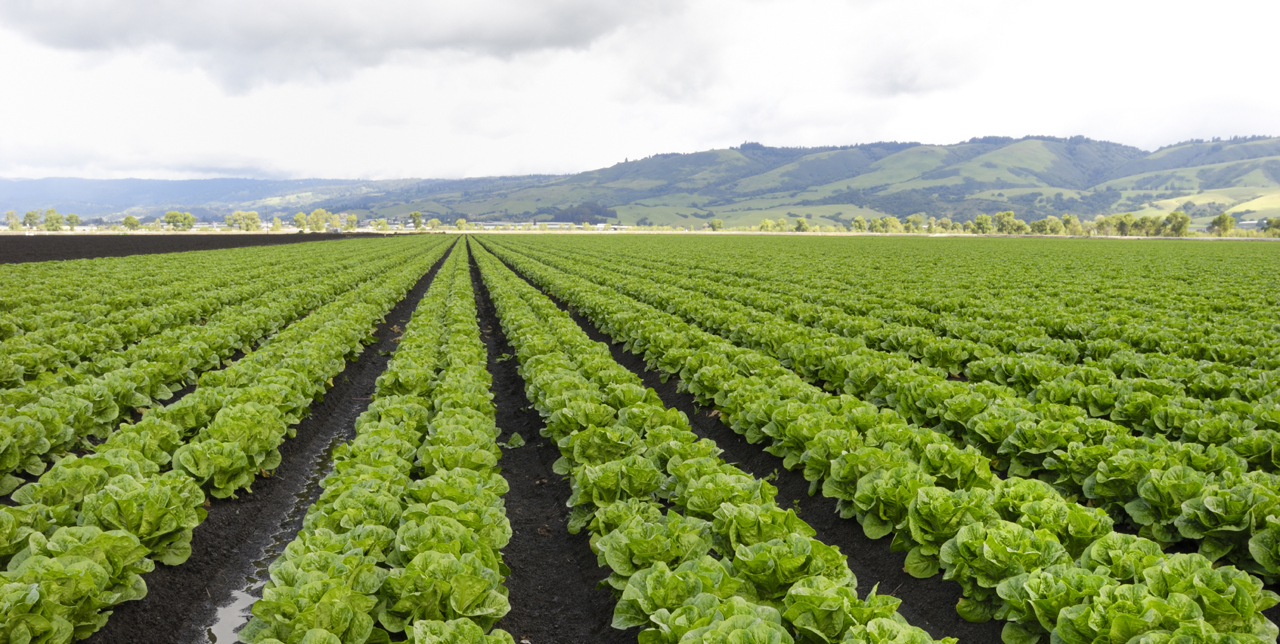
If you’re new to the world of natural and organic foods and farming, this list will help give you the vocabulary to make informed food choices.
Farming
Organic Agriculture: Organic farming is a strictly regulated farming practice that doesn’t allow for the use of synthetic pesticides, herbicides, and chemical fertilizers. Organic farming:
- Uses non-GMO (genetically modified) seeds;
- Employs environmentally-conscious farming practices;
- Helps create and maintain nutrient-dense land;
- Works with natural climate rhythms;
- And protects the water supply.
Lands also need to be certified organic, which is a process that typically takes a minimum of three years. During this process, organic standards are employed in farming practices so that the land can be certified.
In North America, labels from Canada Organic, USDA National Organic, Pro-Cert, or Quality Assurance International let you know the product has been certified as organic by an official third party organization recognized by the Canadian government.
Transitional Farming: Obtaining full certification as an organic farm is a commitment of both time and money. Crop farms interested in pursuing certification for land that had previously been used to grow conventional crops, must first apply for transitional certification. A “transitional” crop is grown on land that’s in the process of converting from conventional to organic. Certified transitional farms use organic standards in their farming practices and need to do so for a minimum of three years for organic certification. Before the three-year mark, any crops grown on the field are considered “transitional” crops and cannot be sold on the organic market.
Biodynamic Agriculture: Similar to organic farming principles, biodynamic agriculture also draws on insights made by Rudolph Steiner, a mid-20th century German philosopher. Today the biodynamic movement encompasses thousands of regenerative gardens, farms, ranches, orchards, and vineyards in a wide variety of climates, ecological contexts, and economic settings.
Hydroponics: Hydroponics, a subset of hydroculture, is a method of growing plants without soil. Instead of soil, plants are grown in a mineral nutrient solution in water. Hydroponic nutrient solution can be made from fish waste, duck manure, or normal nutrients (fertilizer). Hydroponically grown plants are housed in plastic reservoirs in greenhouses.
Aquaponics: Refers to a system that combines aquaculture (the raising of aquatic animals like fish, snails, or prawns in tanks) with hydroponics (cultivating plants in water) in a symbiotic environment. In normal aquaculture, waste from the animals raised accumulates in the water, increasing toxicity. In an aquaponic system, water from an aquaculture system is fed into a hydroponic system in which waste is broken down by bacteria and utilized by plants as nutrients. The water is then recirculated back to the aquaculture system.
Permaculture: A combination of agriculture and social design principles that work together to support natural ecosystems. The three core tenets of permaculture are:
- Care for the earth: Provision for all life systems to continue and multiply.
- Care for the people: Provision for people to access those resources necessary for their existence.
- Return of surplus: Reinvesting surpluses back into the system to provide for the first two principles. Sometimes referred to as the Fair Share ethic to reflect that each of us should take no more than what we need before we reinvest the surplus.
The focus of permaculture is not on separate elements but rather on relationships created among them by the way they are placed together. Permaculture design seeks to minimize waste, labour, and energy input by building systems with a high level of synergy. To this end, permaculture designs are constantly evolving.
Local: Local produce, meat, and seafood are fresher, healthier, and have less impact on the environment because they’re harvested when ready and travel less of a distance to reach your plate. Moreover, it keeps dollars invested in local communities.
The definition for local in use by The Sweet Potato is less than 200 km, though no standard definition exists.
Clean: We use clean to mean free from synthetic chemicals including hormones and antibiotics, fertilizers, pesticides, fungicides, and herbicides. Clean does not mean a product has been certified organic, but it is Non-GMO and raised and produced responsibly.
GMO Genetically Modified Organisms
Genetically modified organisms (GMOs) are organisms that have had their DNA altered or modified through genetic engineering usually to introduce a trait not seen naturally in the organism. Where foods are concerned, many cash crops like soy, corn, canola, potatoes, alfalfa, squash, beets, and flax have been genetically modified to resist pathogens or herbicides or to change their nutrient profile.
With concerns related to food safety, regulation, labelling, environmental impact, research methods, and the fact that some genetically modified seeds are the intellectual property of corporations, the public are increasingly demanding organic and certified Non-GMO foods. At the Sweet Potato all our produce is grown from non-GMO seeds. As well, our full bulk and bakery line is GMO-free!
Animal Welfare
Cage-Free: Eggs produced by cage-free hens describes hens that may or may not be permitted outside but do roam freely. Eggs from hens that only roam indoors may be labelled ‘barn-roaming’, ‘barn’, or ‘cage-free’.
Free-range: Animals that are raised ‘free-range’ can roam freely outdoors for at least part of the day. This term can apply to meat, eggs, or dairy farming.
Organic Meat: Organic meat comes from animals that have been raised without treatment of hormones or antibiotics and have been fed a diet free from anything grown from GMOs and with synthetic fertilizers, pesticides, herbicides, or fungicides. As well, minimum space allowances and access to the outdoors are part of criteria that need to be met. Organic meat can be fully traceable from flock to farm and is certified by an independent third party.
Trade
Fair Trade: What started as a social movement that advocates for the payment of higher prices to exporters of commodities from developing countries to developed countries has become a fully certified industry. Fair trade practices seek to promote greater equality where inequality exists as the starting point.
It promotes sustainable development by offering better trading conditions to, and securing the rights of, marginalized producers and workers in developing countries. Fair trade is grounded in three core beliefs:
- That producers have the power to express unity with consumers;
- That world trade practices that currently exist promote the unequal distribution of wealth between nations;
- And lastly, that buying products from producers in developing countries at a fair price is a more efficient way of promoting sustainable development than traditional charity and aid.
With the certification of the industry, producers now need to apply for and pay to join a certifying body. Some criticism has arisen around how this prevents access for the most marginalized producers.
Direct Trade: Advocates of direct trade practices promote direct communication and price negotiation between buyer and farmer/producer. There is no precise definition for the term and no third-party certification. The term was coined for the coffee industry but is now applied to other growers such as cocoa, nuts, and handicraft artisans. The term was born out of frustration with the limitations of Fair Trade certification, mainly that certification is too onerous and costly to farmers and artisans who must qualify and apply for the very certification meant to offer them protections.

